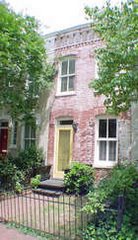
 There are many ways of identifying a potential publisher for your work, but one of the most interesting is by ascertaining how that publisher views its niche. 95% of the authors I meet think about themselves and their needs, focusing on what they want to write, and why. But that rare 5% who have the insight to consider what various publisher need to publish are often rewarded.
There are many ways of identifying a potential publisher for your work, but one of the most interesting is by ascertaining how that publisher views its niche. 95% of the authors I meet think about themselves and their needs, focusing on what they want to write, and why. But that rare 5% who have the insight to consider what various publisher need to publish are often rewarded.Studying the publisher's catalogues is vital. One catalogue is helpful, but a series run from two or three years back yield exceptional insights to the scope of a publisher's list. What sorts of books is the publisher always interested in? What nonintuitive choices did its editors make? What books succeeded best for that publisher over time? What awards has the house won, and what kinds of starred reviews or other industry recognition has it enjoyed?
After thinking about the house as a corporate entity, it is also fun to look at individual editor lists. Every editor is different, even if she or he took over from another editor with ostensibly the same specialty. It's helpful to try to understand as much as you can about how and why individual editors make the choices that they do. Sometimes they'll tell you themselves ("I'm looking for more narrative nonfiction now," or "I'd love something with an emphasis on Eastern Europe because my list is lighter there" . . . ), other times you have to intuit it from the track record and what seems to be missing.
I'm not suggesting writing just to fill a publishing gap, or twisting what you do to meet some imaginary publishing need, but rather to try as an author to perceive how and why certain publishing houses make their choices. This involves publisher research, dialogue with interested editors (conferences are good places for this), and following the paper trail of what has done well in the academic marketplace for that particular house.


No comments:
Post a Comment